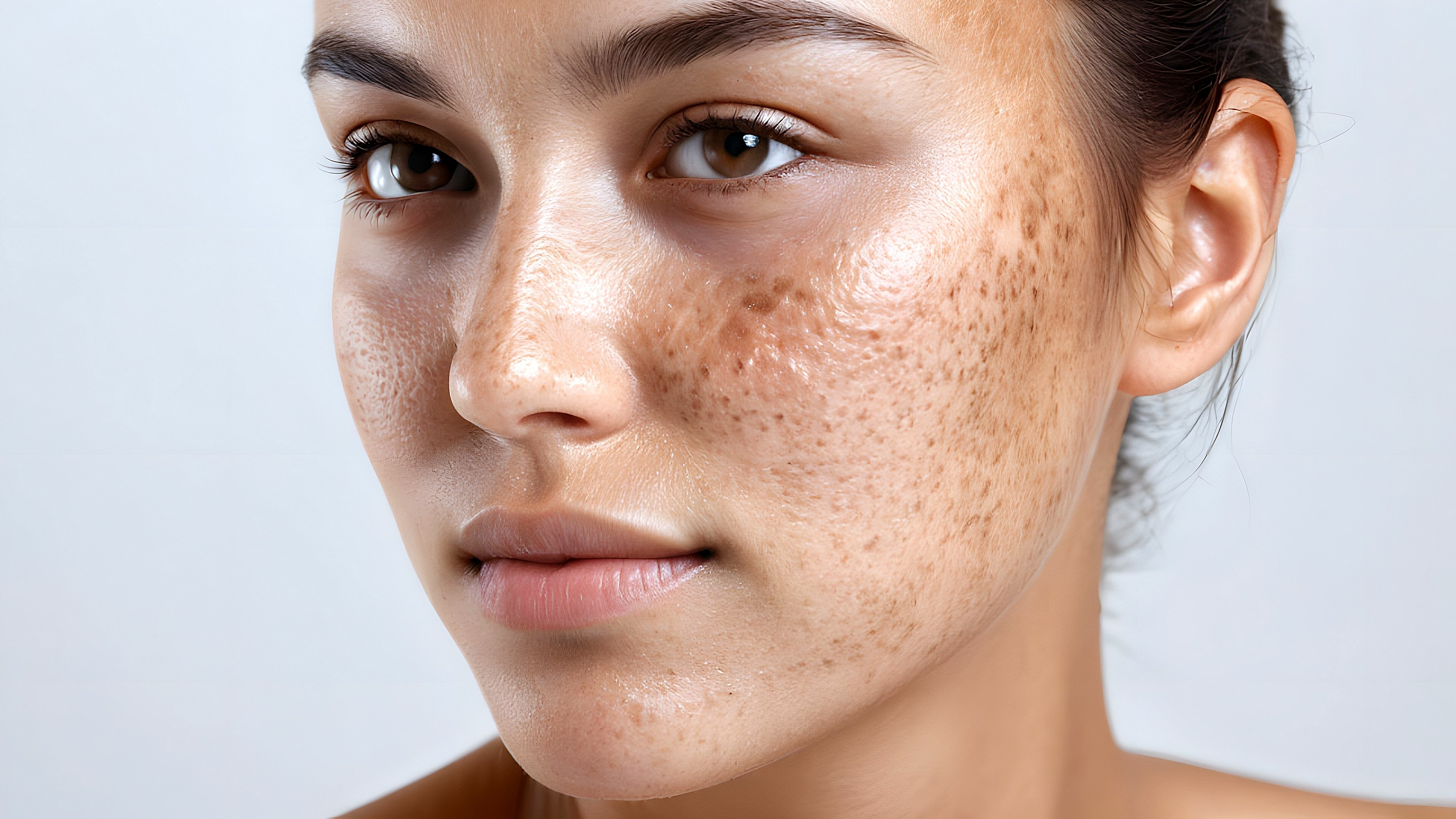
Article Summary
Many patients are affected by the visible appearance of melasma. Learn about the potential benefits of hydroquinone as it relates to melasma.
Hydroquinone for Melasma
Melasma is a common hyperpigmentation disorder characterized by brown or gray-brown patches on sun-exposed areas of the face.1 Because of its cosmetic appearance, it can significantly impact a person’s quality of life.1
It predominantly affects women (about nine times more than men), particularly those with light brown skin tones.3
Discover Empower’s Melasma HQ Cream
What Causes Melasma
Melasma is a multifaceted condition influenced by a variety of factors, involving:
Genetic predisposition: Over 40% of patients studied reported having relatives affected with melasma4 Genes involved in the production of melanin may be more active or responsive in individuals prone to melasma.5
Hormonal influences: Melasma is present in 15% to 50% of pregnant women (percentage varies depending on the population), according to research. Pregnancy is considered a factor in the onset of melasma though the exact mechanisms are unknown.3
UV exposure: Sun exposure is also considered a factor in the presence of melasma. UV radiation can result in the formation of free radicals, which may stimulate excess melanin production in the skin.3
Hydroquinone: A First-Line Treatment
Hydroquinone (HQ) is a widely used topical depigmenting agent, and studies suggest that it is one of the most commonly used treatments for melasma compared to other therapies2. It works by potentially inhibiting tyrosinase, the key enzyme in melanin production, which may help reduce pigmentation5 in affected areas.
HQ is often used as part of a triple combination cream (TCC) alongside tretinoin and a corticosteroid, a combination that has been studied for its potentially enhanced effects.
High-quality HQ from Empower Pharmacy
Empower’s research and development team has done extensive work to ensure we have compounded a high-quality product, Melasma HQ Cream, to potentially address the appearance of melasma.
Each active pharmaceutical ingredient (API) is sourced from FDA-registered facilities to help ensure we offer top-quality products.
Important disclaimer: Empower Pharmacy’s products are not FDA-approved and are not tested for efficacy and safety.
Offer high-quality HQ with varying strengths to meet your patient’s needs.
Contact a clinic liaison today to discover how we can support your practice’s needs.
Frequently Asked Questions
1. What are considerations for long-term hydroquinone use?
Long-term use of HQ is not recommended due to potential side effects. It’s best used under medical supervision for limited periods, typically 3-6 months, followed by a break.1 Consult with a qualified healthcare professional.6
2. Can hydroquinone be used during pregnancy?
The safety of using HQ while pregnant is unestablished. It is recommended that pregnant and breastfeeding women minimize exposure.6
3. Is sun protection necessary while using hydroquinone?
Studies suggest that using sunscreen along with HQ may potentially enhance its depigmenting potential.2
4. What should be done if hydroquinone causes irritation?
While using HQ, it is recommended to monitor for hypersensitivity or long-term irritation, in which case it is suggested to discontinue use. Always consult with a healthcare provider.5
2. Sarkar, R., Handog, E. B., Das, A., Bansal, A., Macarayo, M. J., Keshavmurthy, V., Narayan, V., Jagadeesan, S., Pipo, E. I., Ibaviosa, G. M., Podder, I., & Bansal, S. (2023). Topical and Systemic Therapies in Melasma: A Systematic Review. Indian Dermatology Online Journal, 14(6), 769. https://doi.org/10.4103/idoj.idoj_490_22
3. Basit, H., Godse, K. V., & Al Aboud, A. M. (2023). Melasma. PubMed; StatPearls Publishing. https://www.ncbi.nlm.nih.gov/books/NBK459271/4. Handel, A. C., Miot, L. D. B., & Miot, H. A. (2014). Melasma: a clinical and epidemiological review. Anais Brasileiros de Dermatologia, 89(5), 771–782. https://doi.org/10.1590/abd1806-4841.201430635. Khanna, R., Nowah, A., Morris, D., & Desai, S. R. (2023). Pathogenesis of melasma. Dermatological Reviews, 4(1), 12–16. https://doi.org/10.1002/der2.178
6. Schwartz, C., Jan, A., & Zito, P. M. (2020). Hydroquinone. PubMed; StatPearls Publishing. https://www.ncbi.nlm.nih.gov/books/NBK539693/






